

Last updated on
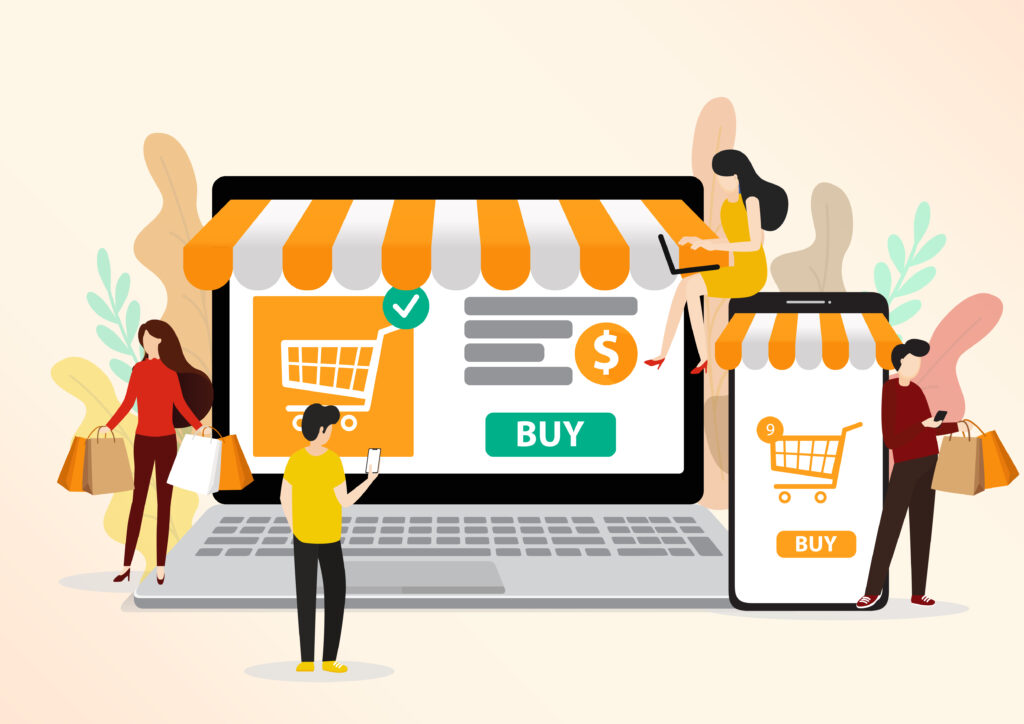
Effective ecommerce websites eliminate as many barriers as they can between users and the products they seek. The following features and policies have been selected for their positive impact on user experience, streamlining the purchasing process and ensuring continued engagement on your site.
Ensuring customers quickly find the products they need hinges on a user-friendly navigation system. It’s crucial to categorize products logically, prioritizing popular categories.
Sephora understands its customers’ shopping preferences.
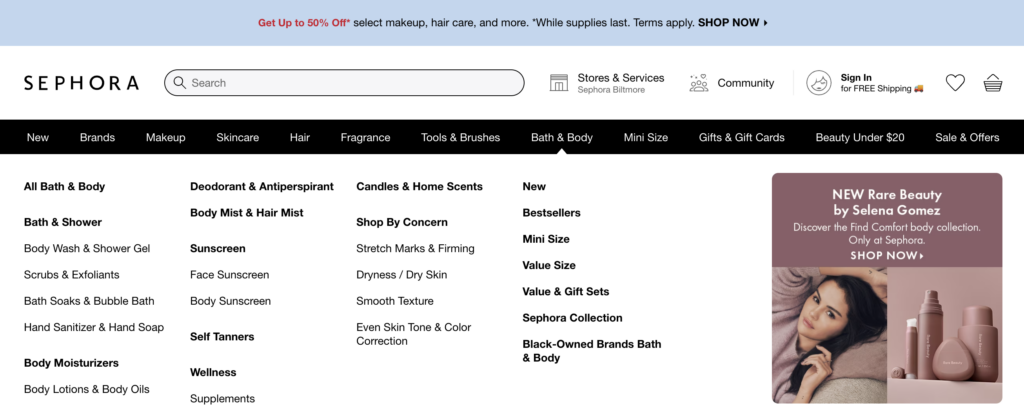
Some prefer browsing by brand, others by category. Reflecting this, Sephora organizes its navigation bar accordingly, featuring quick links to value sets and current sales.
Additionally, Sephora employs breadcrumb navigation across its site, facilitating easy navigation back to the main page or product categories.
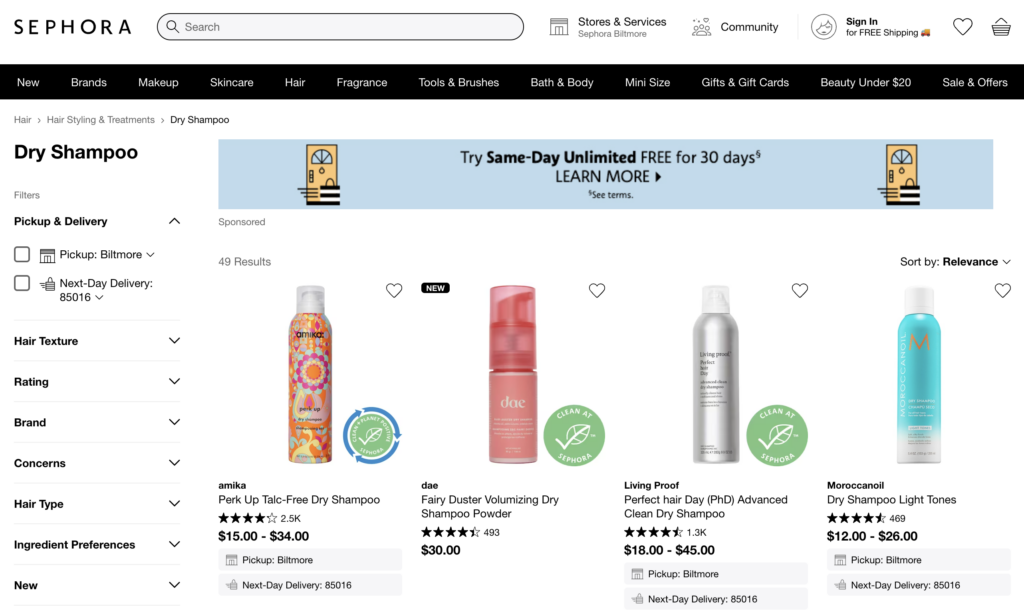
It’s essential to rigorously test these navigation features on mobile devices. This ensures seamless usability for customers accustomed to the desktop experience, enabling them to find and purchase desired items effortlessly.
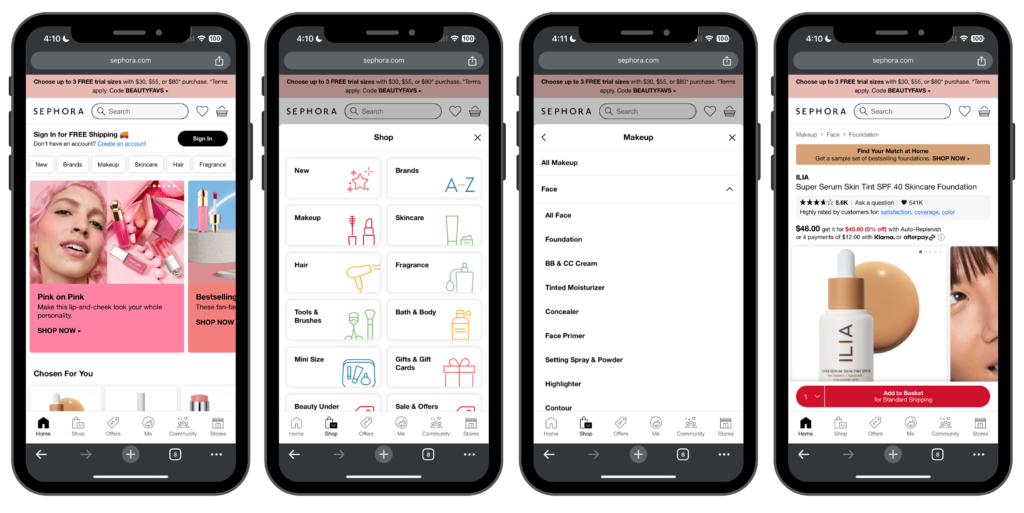
Many leading ecommerce websites include site search functionality in addition to user-friendly navigation.
This feature enables customers to directly search for specific items they desire, bypassing traditional navigation routes.
Nordstrom, for instance, enhances user experience with a site search that suggests popular brands and products related to the search entry.
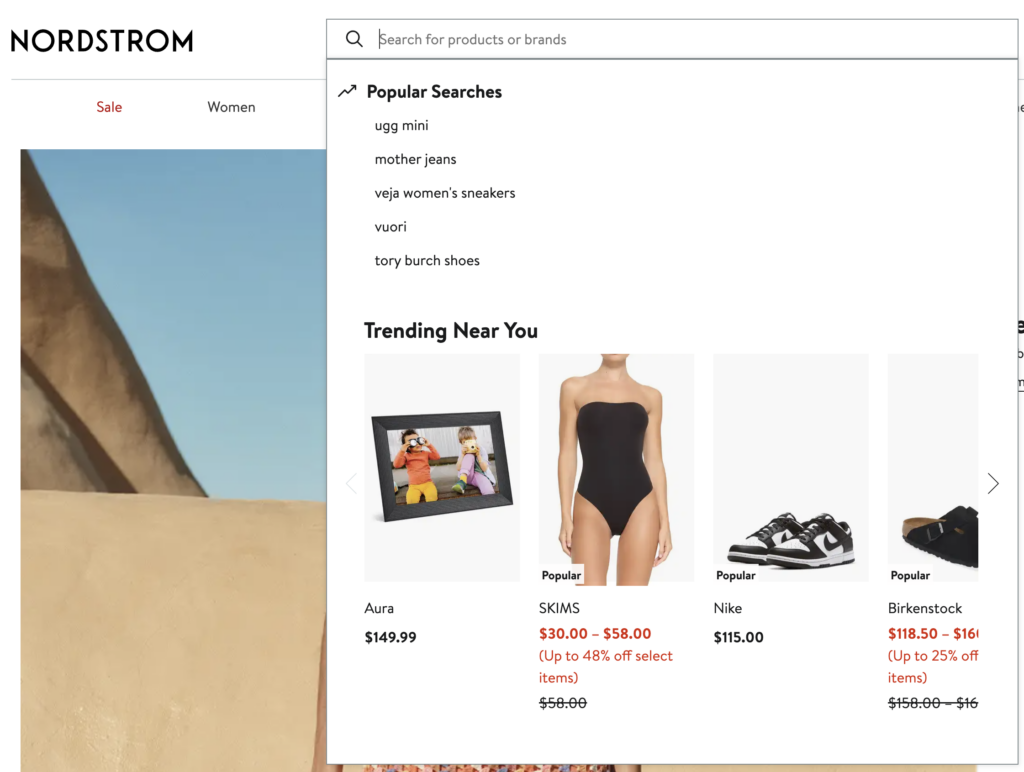
Moreover, Nordstrom’s site search feature also highlights popular and trending searches, making it easier for customers to explore current interests.
In stores offering a wide range of products, product filters play a crucial role in assisting customers in swiftly locating the exact product they need, based on various criteria such as features, size, and availability.
At Walgreens, customers can utilize an item availability filter to organize products according to options like pickup, same-day delivery, shipping, or current in-stock availability.
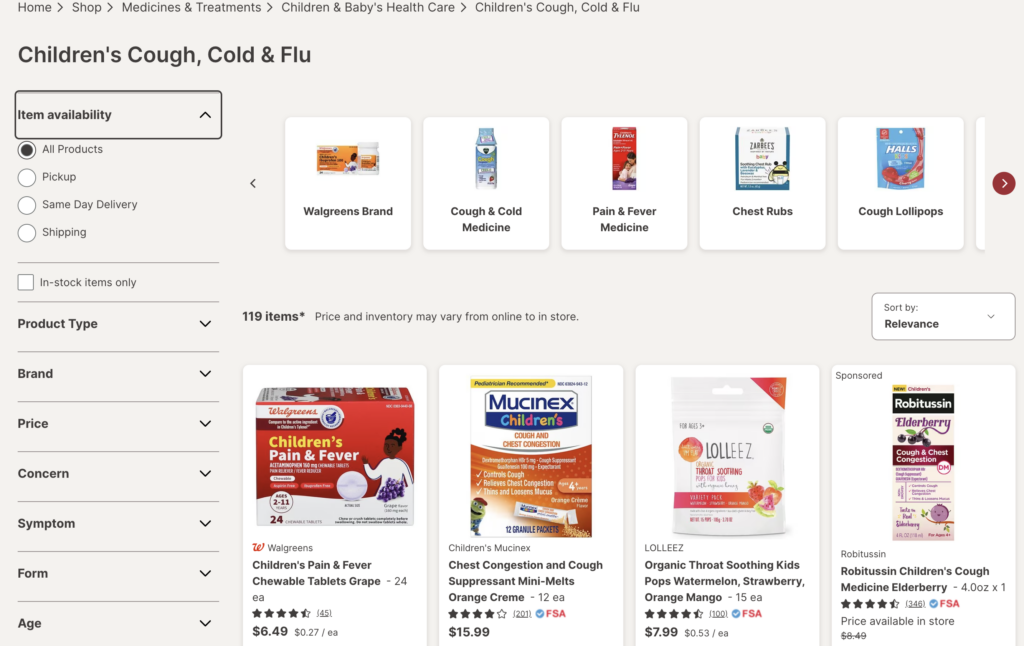
Furthermore, various product categories on the site feature filters that categorize items into distinct types, effectively separating medications from cosmetics for easier browsing.
Have you thought about leveraging your website’s footer to assist customers in discovering your most sought-after products?
Consider featuring a list of links to top products, services, and essential information that customers frequently seek.
T-Mobile utilizes its footer strategically by directing customers to its social media profiles, English and Spanish sites, featured phones and plans, support options, and company information.
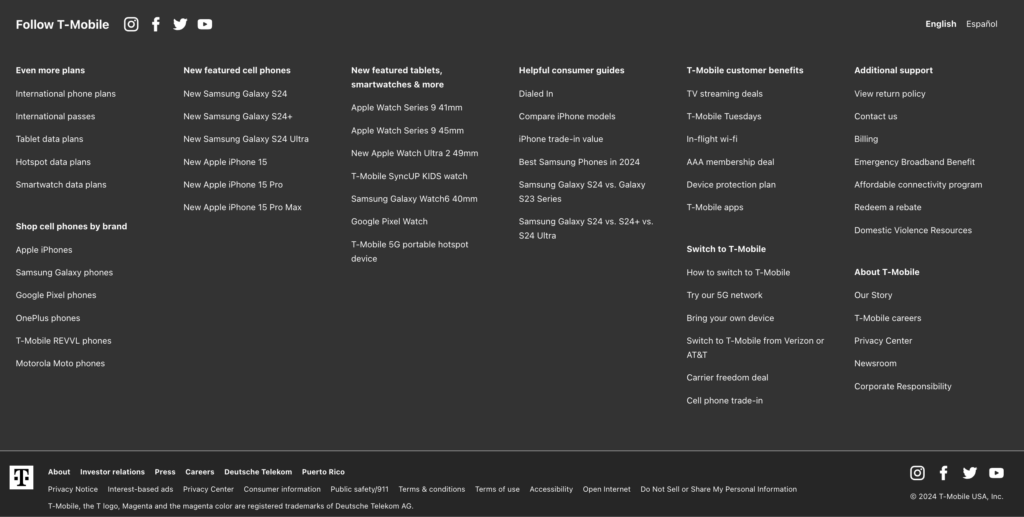
This approach ensures that the footer includes links to everything the company wants both customers and search engines to easily access from any page on its website.
Incorporating video into your product pages can significantly boost conversion rates.
The majority of ecommerce platforms enable retailers to seamlessly integrate videos and images into their product pages.
Apple, for example, effectively utilizes videos to showcase the features of its newest iPhone on its sales page. The combination of high-quality product images and videos enhances the online and in-store appeal, effectively driving sales.
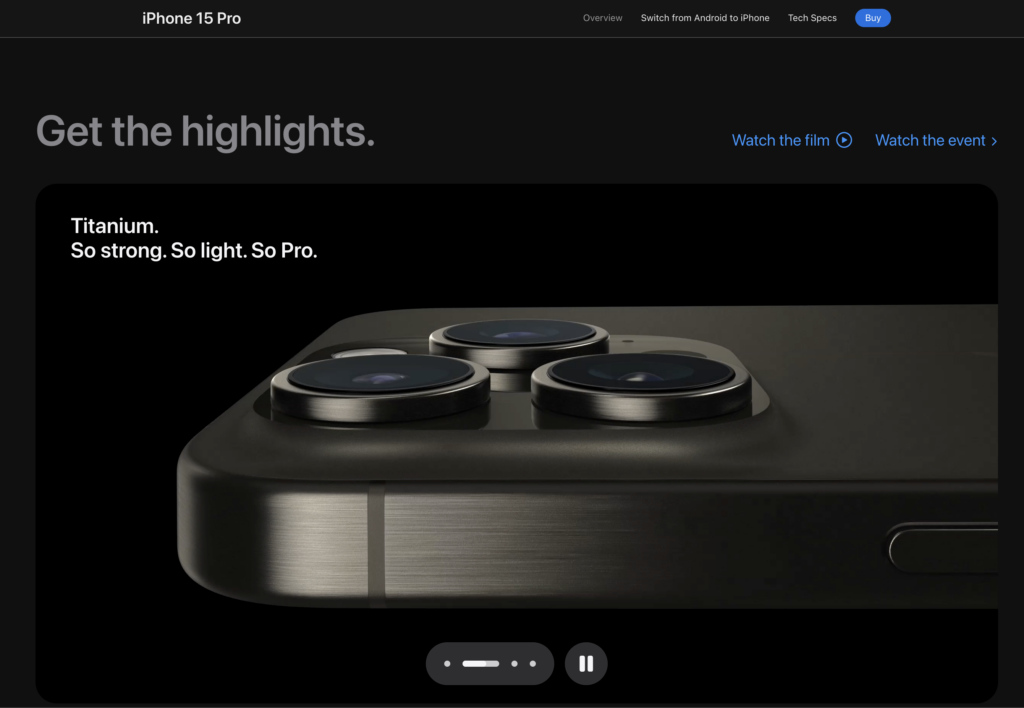
When offering a wide array of products within any category, enabling customers to swiftly compare key features is invaluable.
REI facilitates this process for items such as hiking bags.
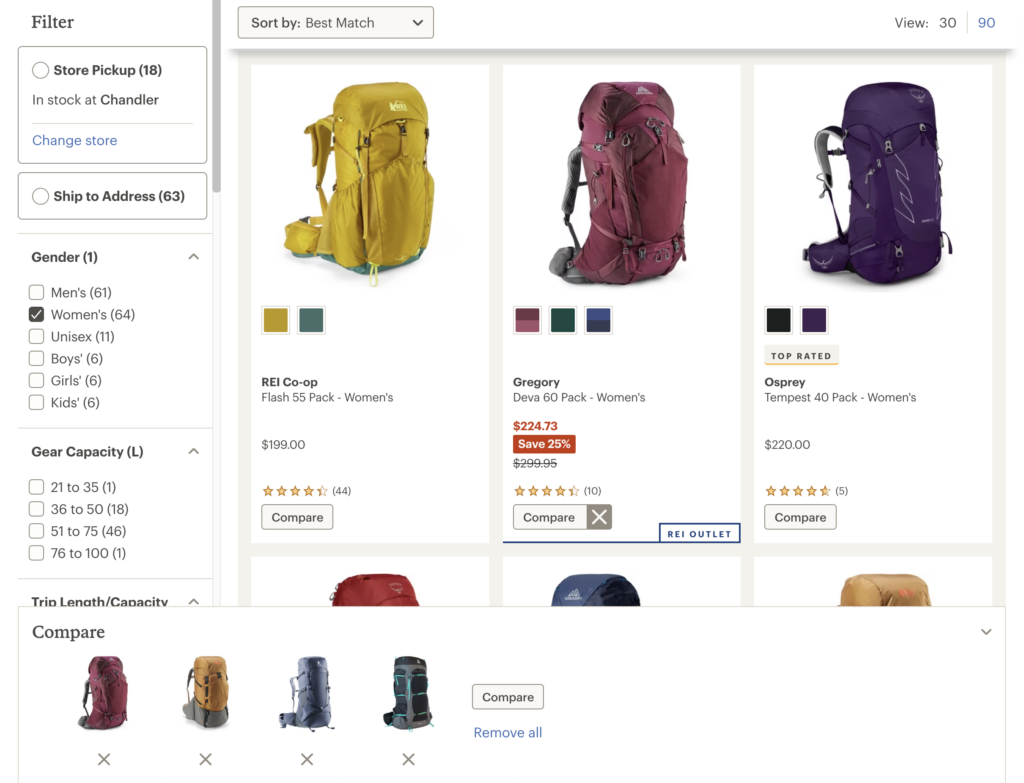
On the comparison screen, customers access detailed product descriptions, ratings, reviews, and pricing information for each item.
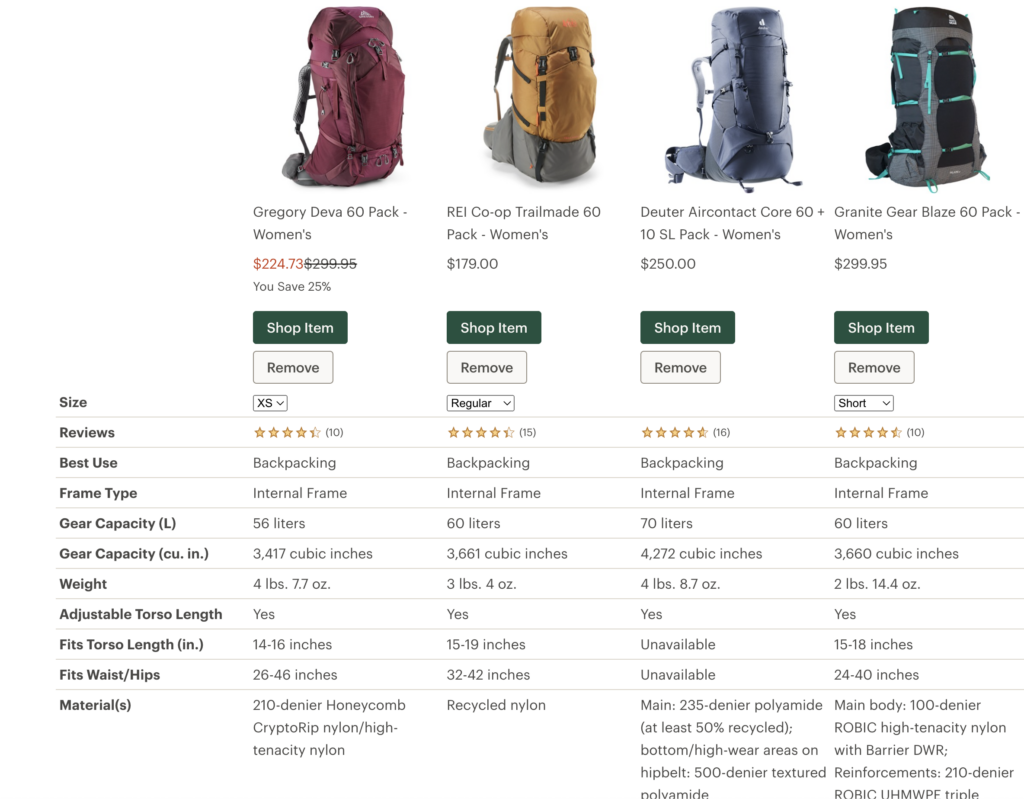
This feature empowers customers to make informed decisions based on their preferences and needs.
Product reviews and ratings represent the most widely embraced type of user-generated content on ecommerce platforms.
This section of a product page plays a pivotal role in offering social proof to shoppers, assuring them that a product aligns with their requirements.
Amazon enhances this experience by enabling customers to include photos and videos in their reviews, distinguishing verified reviews.
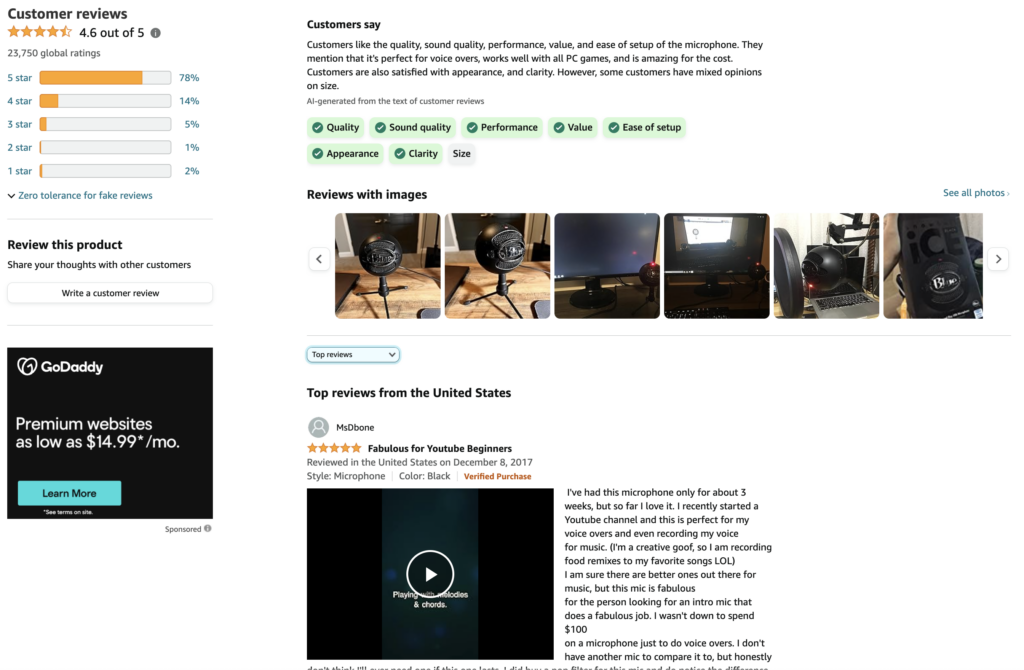
Additionally, Amazon has explored the use of AI-generated summaries for customer reviews on select products. However, the integration of AI in generating content necessitates careful consideration, as accuracy can vary.
As AI technologies evolve within the ecommerce realm, retailers must approach their implementation thoughtfully to maintain trust and reliability among consumers.
Looking to boost consumer trust in your products? Incorporate a generous return policy prominently on your product page.
Even better, streamline your return process to be effortless.
Zappos excels in both aspects by offering customers a full year to return or exchange items, along with convenient return methods that minimize hassle.
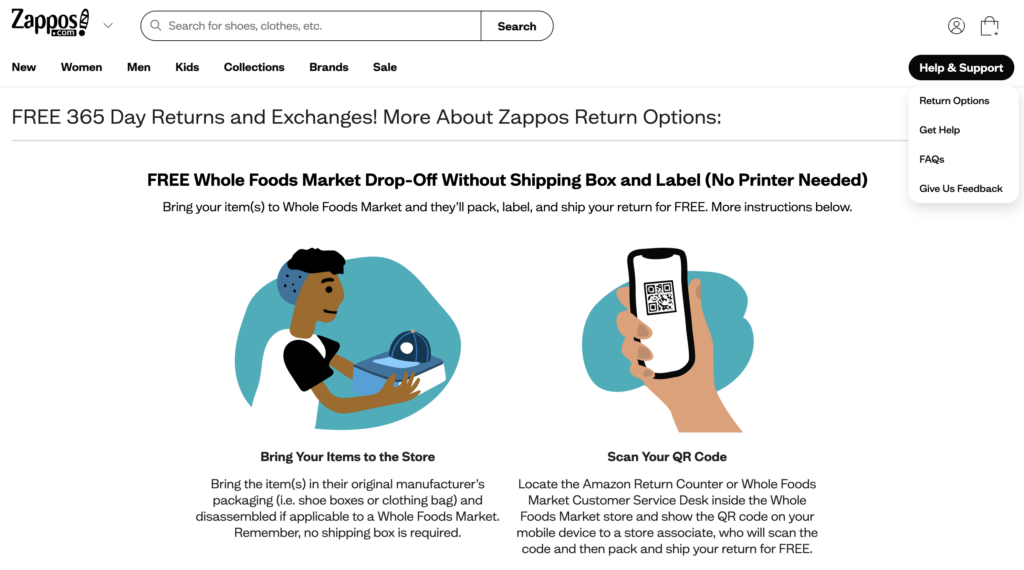
One effective method to integrate user-generated content into your ecommerce store is by featuring a section dedicated to frequently asked questions from customers.
This section serves several purposes:
Magic Spoon exemplifies this approach by placing an FAQ section alongside customer reviews of its cereal.
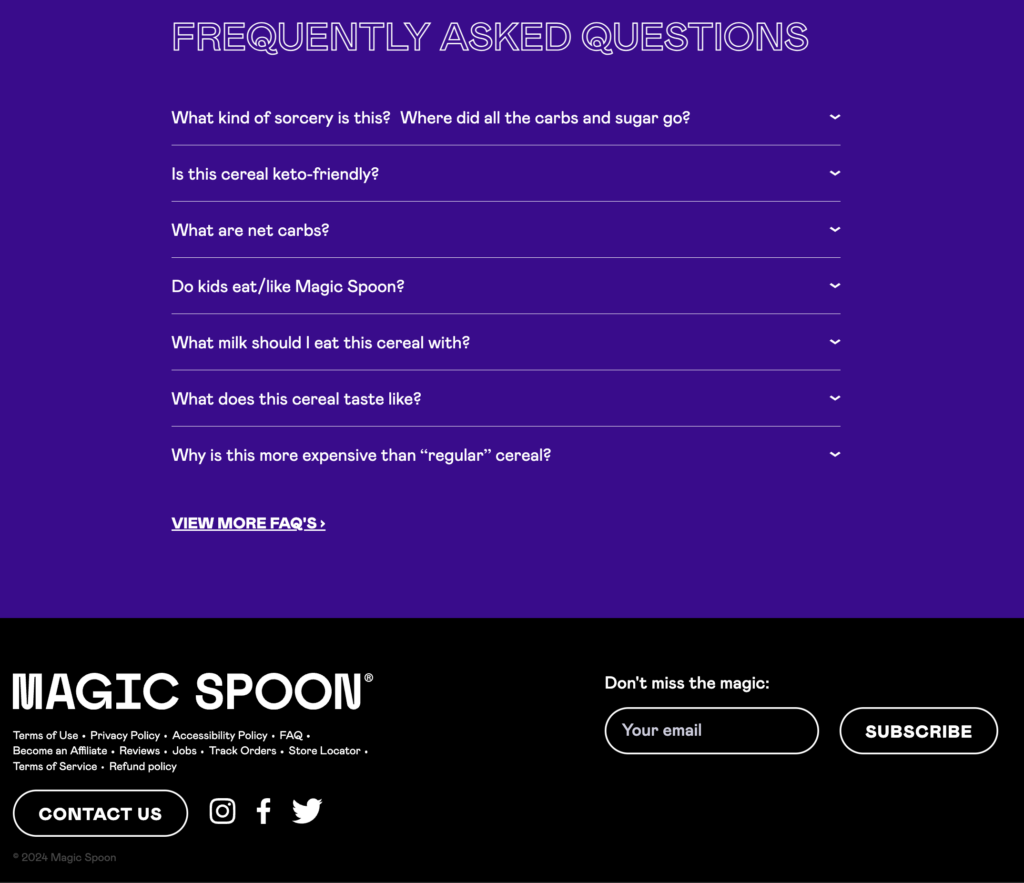
Potential customers can easily access detailed answers by clicking on “View More FAQs,” which cover topics such as shipping, orders, and other relevant inquiries.
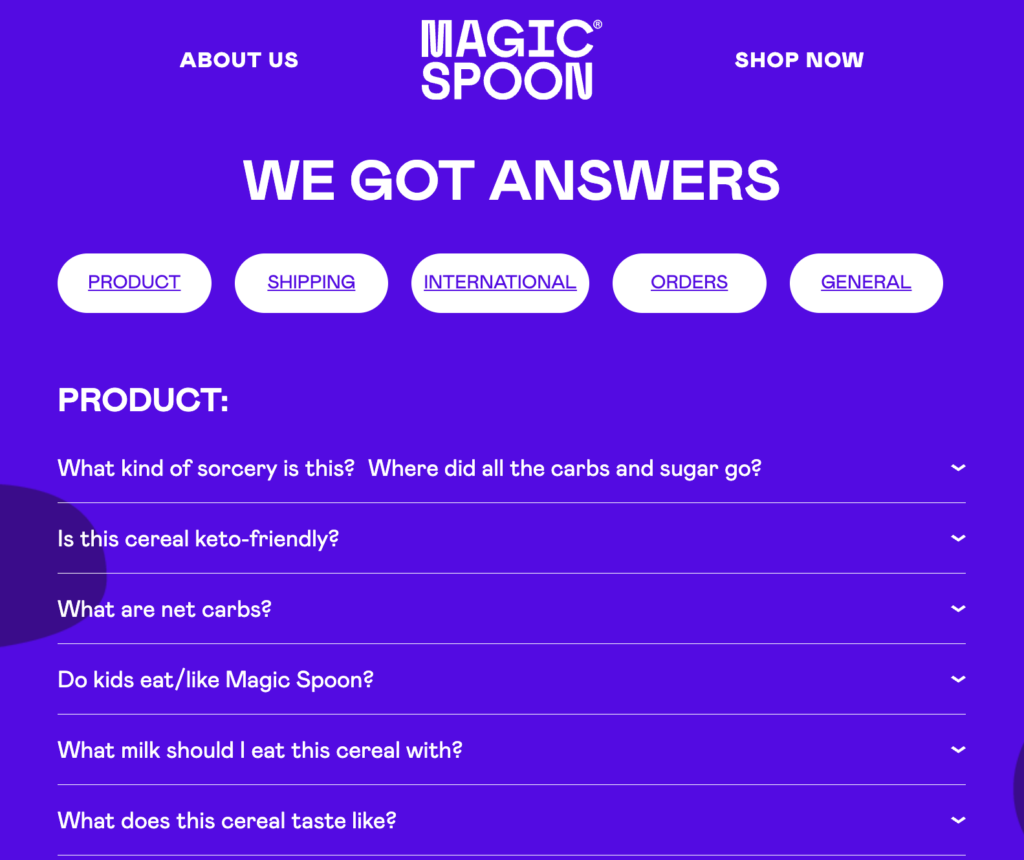
The critical moment before a customer enters their credit card information should be frustration-free.
Ensure that the shopping cart is easily accessible for checkout. Urban Outfitters exemplifies this with a convenient checkout popup each time you add an item to your cart.
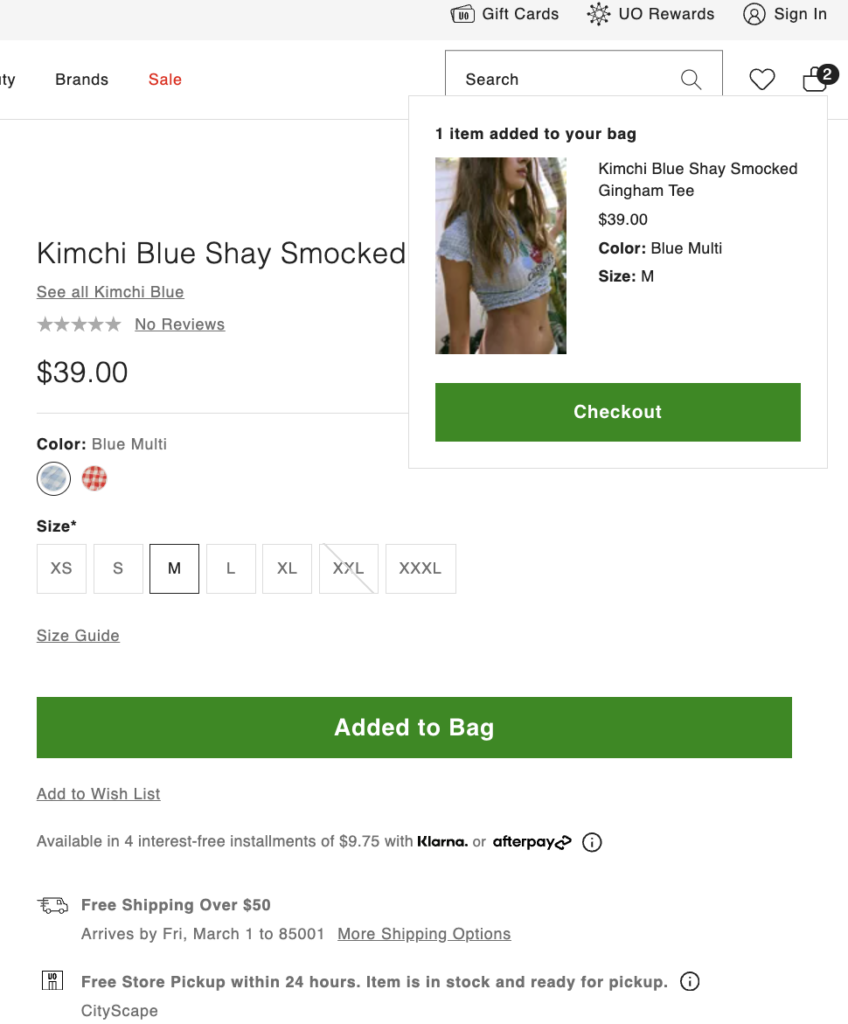
Once on the checkout page, you can review your cart items and choose a quick checkout via PayPal or explore additional options.
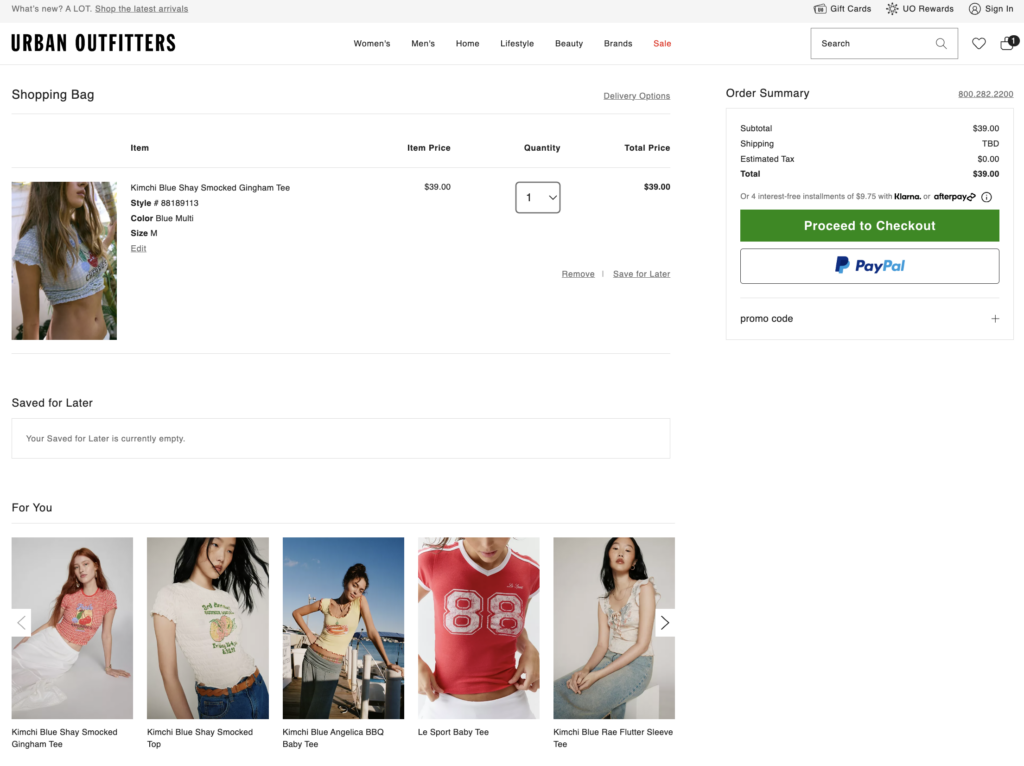
You’ll also be reminded of saved items and suggested complements for your purchase.
On the next page, you have the option to sign in or proceed as a guest.
The critical moment before a customer enters their credit card information should be frustration-free.
Ensure that the shopping cart is easily accessible for checkout. Urban Outfitters exemplifies this with a convenient checkout popup each time you add an item to your cart.
Once on the checkout page, you can review your cart items and choose a quick checkout via PayPal or explore additional options.
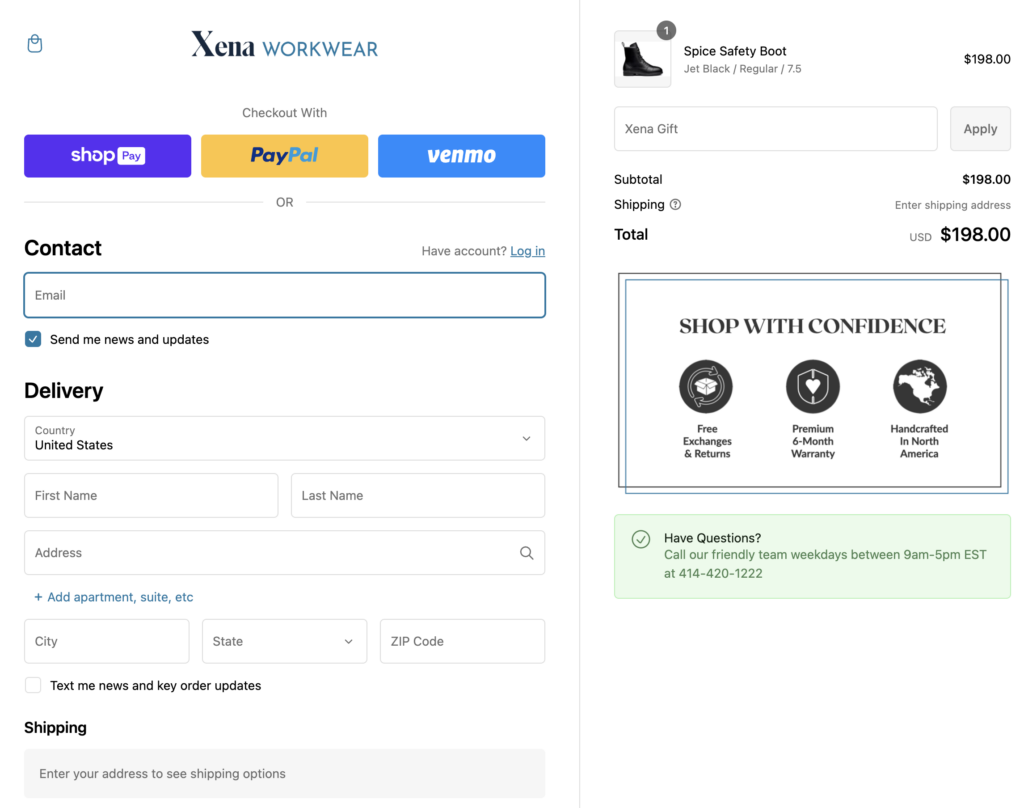
You’ll also be reminded of saved items and suggested complements for your purchase.
On the next page, you have the option to sign in or proceed as a guest.
Enhance user account creation and sign-in speed by implementing single-sign-on (SSO) for your customers.
This feature enables users to swiftly create accounts and log in using their Google, Microsoft, Apple, LinkedIn, or other commonly used accounts.
eBay, along with numerous other prominent shopping platforms, supports this convenient feature.
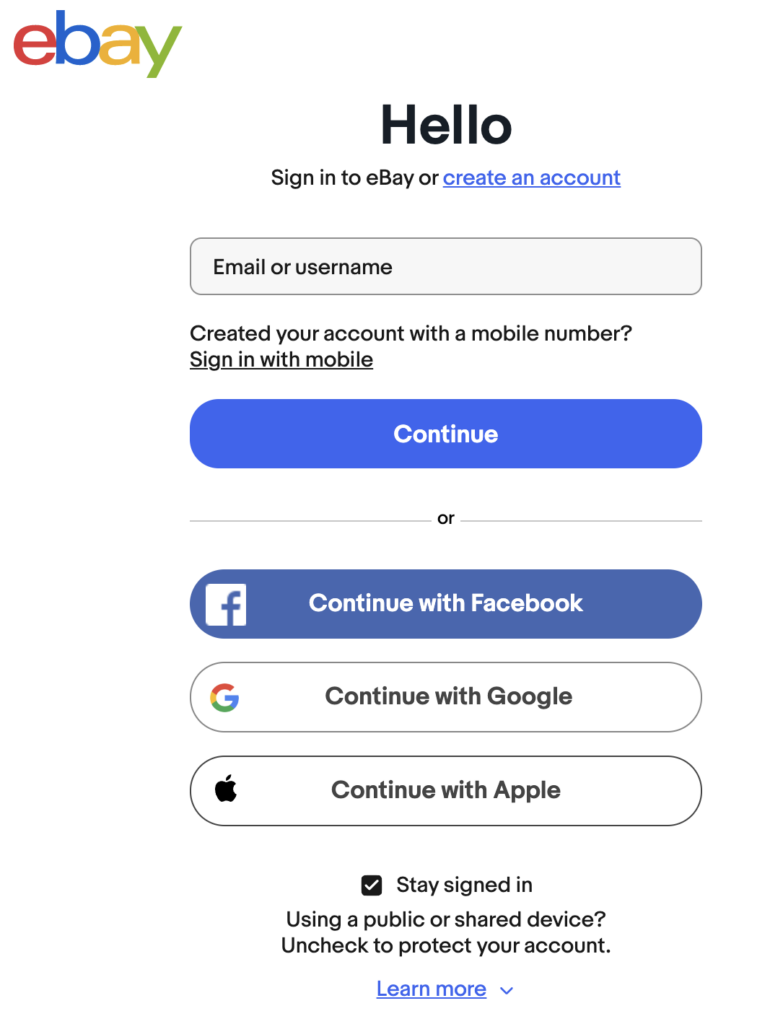
Reducing friction during the signup and sign-in processes can potentially boost your store’s sales.
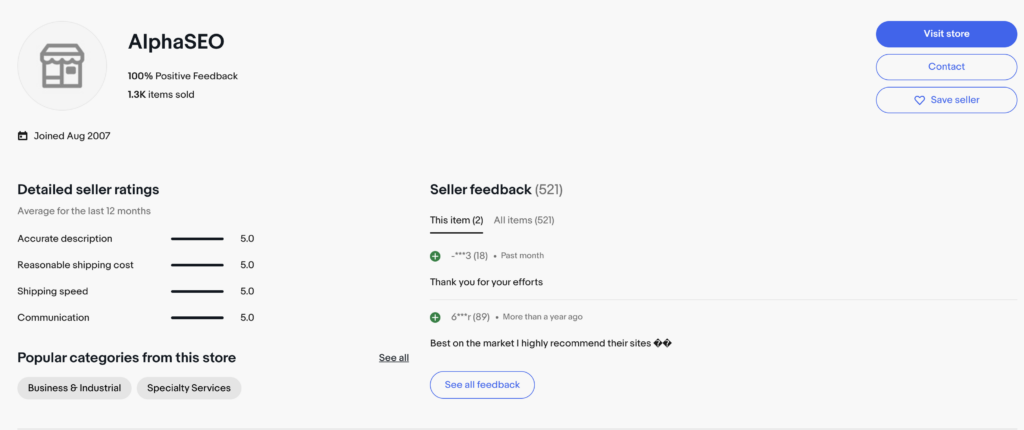
In addition to FAQs on your product pages and store, consider implementing a help center.
This section should address common inquiries regarding online privacy, security, payments, shipping, returns, and other shopping-related concerns.
Etsy exemplifies this approach by offering comprehensive support for top customer issues in its help center, along with resources for sellers on their platform.
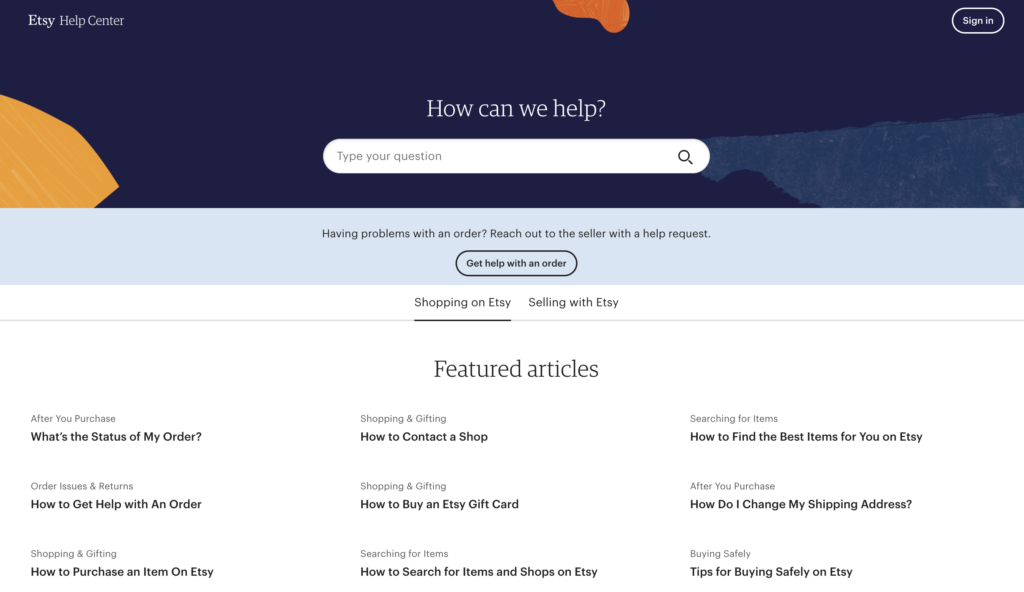
By providing detailed information, Etsy’s help center reduces the need for their support team to handle basic inquiries, allowing them to focus on resolving more complex issues efficiently.
After placing an order, customers are most concerned with its delivery timeline: When will my order arrive?
Ensure easy access for customers to check their order status directly on your website.
AutoZone provides a convenient order tracking page accessible without requiring customers to log in.
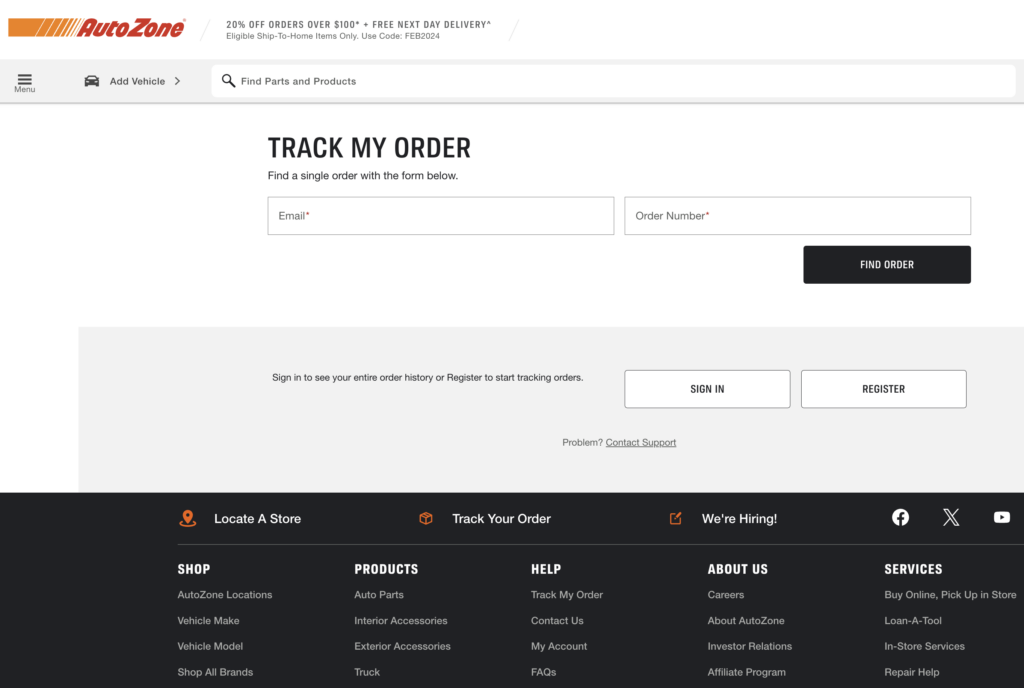
They simply need to enter their email address and the order number from their confirmation email.
This tracking page is prominently placed in the website footer for easy discovery.
For ecommerce brands using Shopify, encouraging customers to utilize the Shop App enhances convenience with features like seamless order tracking, social posts, and reminders for reviews.
Apart from ensuring your website is mobile-friendly for easy access across devices, consider developing a dedicated mobile app for your store.
Mobile apps help keep your brand at the forefront of customers’ minds by placing your app icon/logo on their smartphones.
With an app, you can proactively reach customers with your latest sales messages without waiting for them to open a browser or another app like social media or email.
Home Depot effectively utilizes its app to push promotional updates directly to customers via notifications.
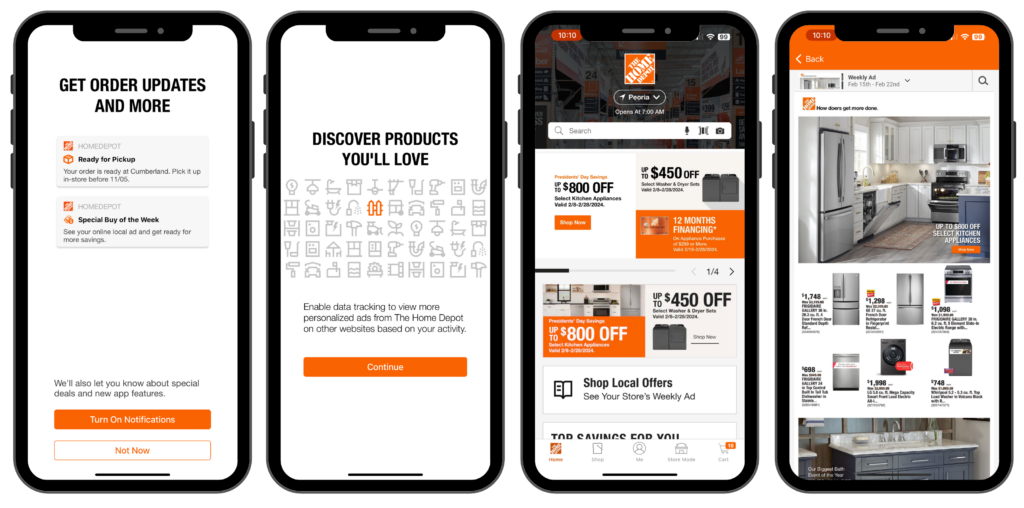
Building a revenue-generating email list is essential for retailers.
If visitors don’t make a purchase on your website, the next best conversion is to capture them as subscribers for your email list.
This enables you to engage them with future sales and promotions via email.
Ecommerce retailers can also capture email addresses by integrating an opt-in form offering special promotions in both the header and footer of their website.
Betabrand effectively uses an introductory offer popup to entice new customers to sign up for email and SMS discounts.
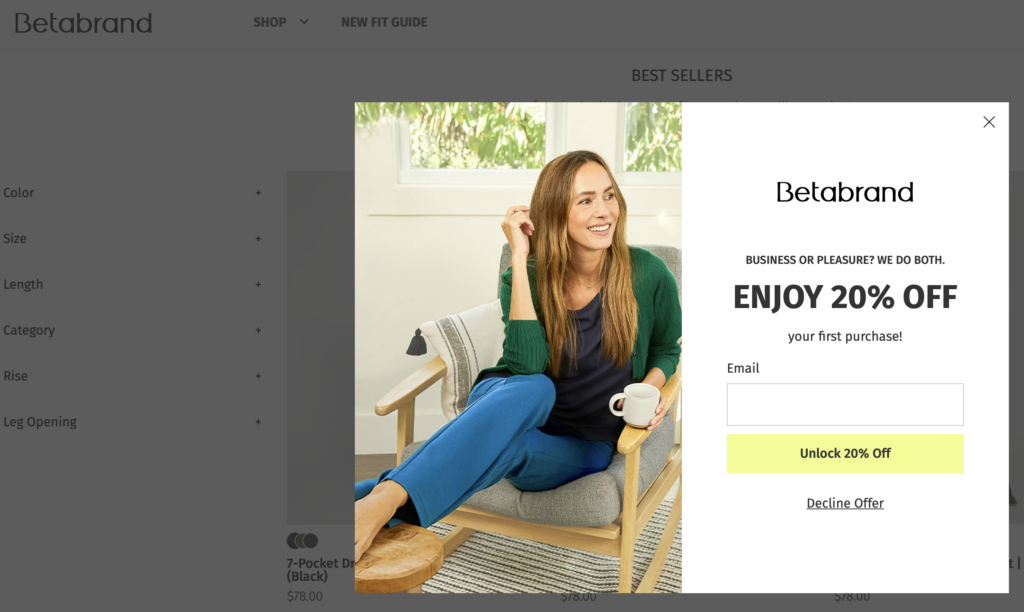
Regular reminders for other visitors are strategically placed in the website’s footer, alongside product review highlights and on the order status page.
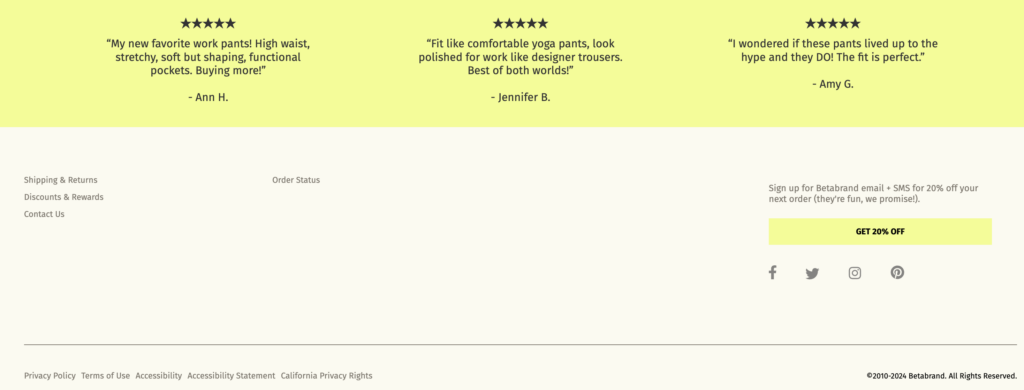
To effectively reach ecommerce store visitors and circumvent spam filters and social media algorithms, consider using push notifications as a valuable subscriber capture method.
Push notification services enable visitors to subscribe to receive your latest updates directly in their web browser.
When you have a promotion or important message to share, you can send notifications that appear in their browser’s notification center.
Shein, along with numerous other ecommerce brands, offers visitors the option to subscribe to push notifications.
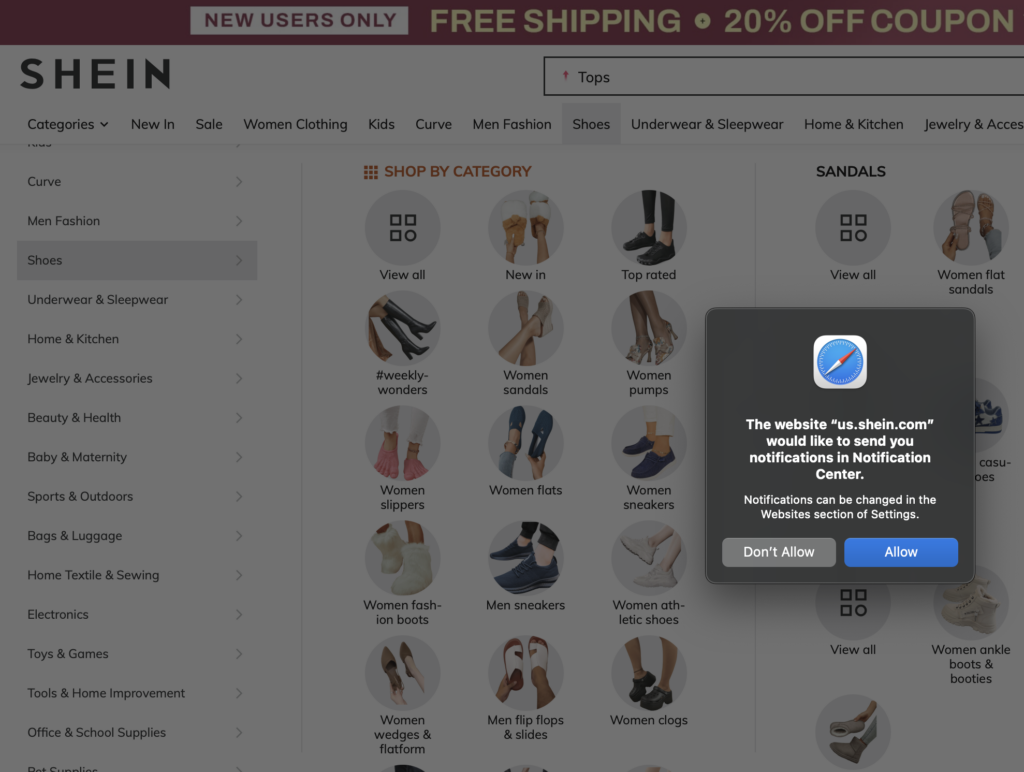
Once subscribed, visitors receive the brand’s latest messages directly through desktop notifications.
Running an ecommerce website offers the advantage of generating revenue continuously, day and night, year-round. This necessitates providing customer support around the clock as well.
Numerous ecommerce platforms employ chatbots to aid online shoppers by answering basic inquiries and guiding them to relevant products or support resources.
For instance, Lowes utilizes “Leo,” an automated assistant equipped with predefined prompts. Visitors can select options to find specific answers, locate products, or resolve simple customer service issues.
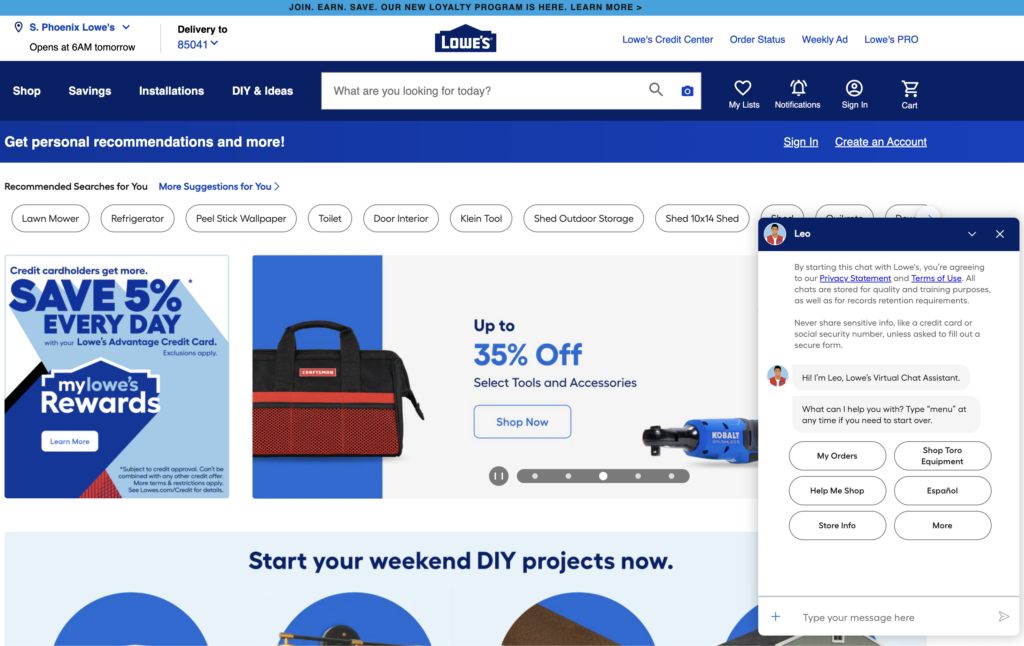
Please note that chatbots used in ecommerce stores differ from AI chatbots such as ChatGPT.
Before integrating chat features into an ecommerce store, thorough research is essential.
Even if a chatbot provides incorrect information, your company may be obligated to honor it, as Air Canada experienced when it had to issue a refund based on information given by its chatbot in a recent case.
When consumers encounter a coupon or discount box during checkout, they frequently turn to Google to search for coupon codes.
In the United States, 88% of shoppers utilize coupons, often visiting sites like slickdeals.com, groupon.com, and retailmenot.com.
To retain customers on your website during checkout, offer compelling deals through your own coupon codes.
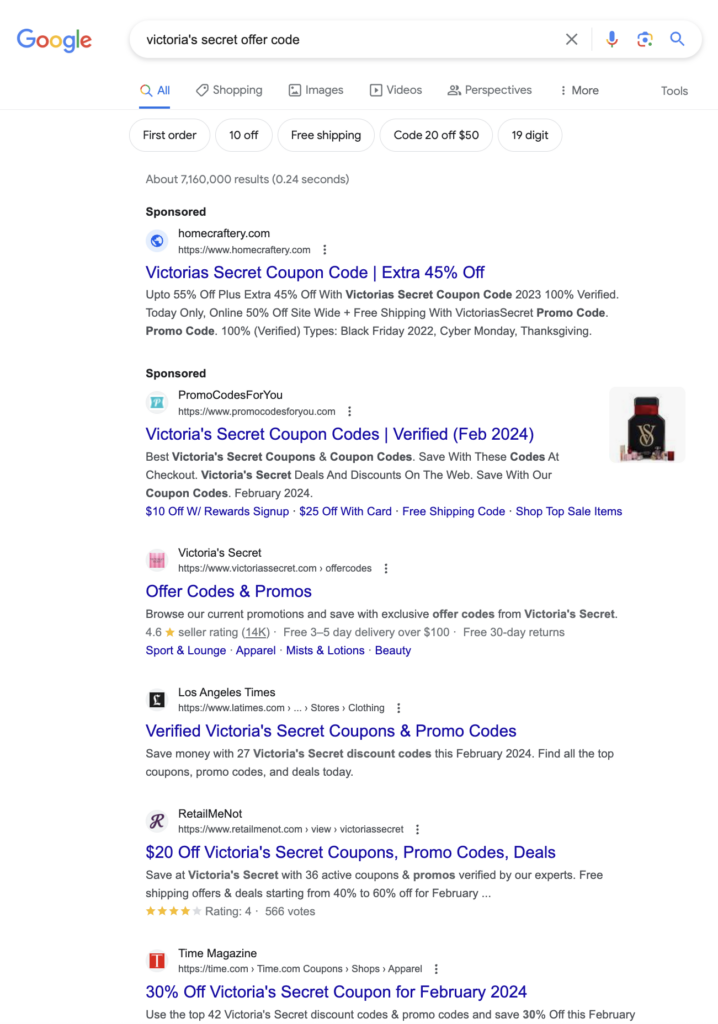
Victoria’s Secret maintains an offer codes page to compete with coupon sites and partners with publishers who feature coupon sections, thereby generating additional affiliate revenue.
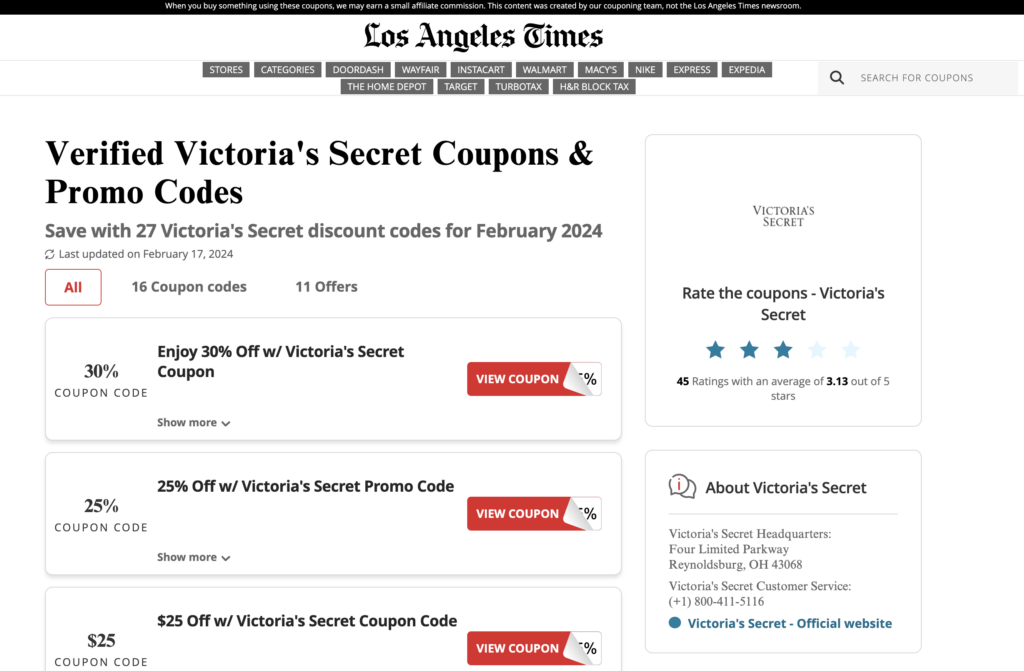
Does your ecommerce store offer special discounts for students, military personnel, first responders, and others?
Make sure your product pages prominently feature these offers, particularly for high-value items.
Samsung effectively showcases these discounts for new website visitors.
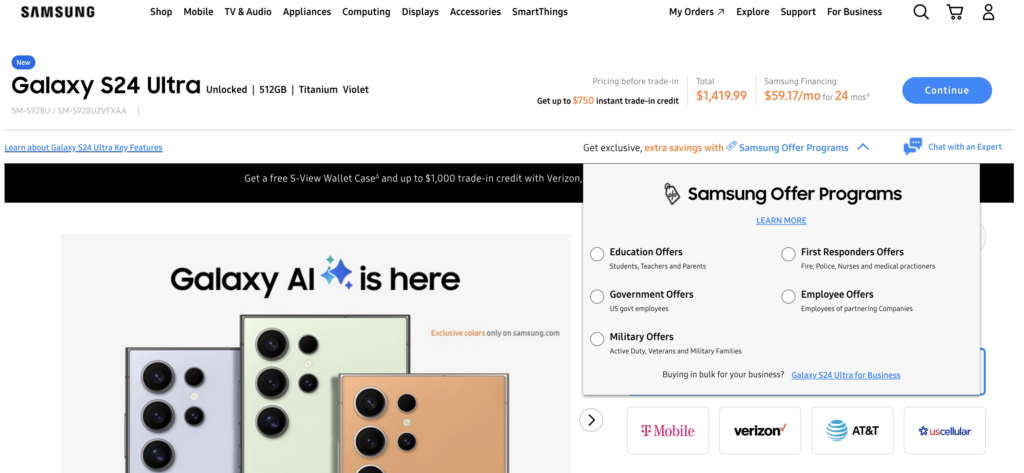
Incorporate wishlist functionality to assist customers in finding items they were interested in during previous visits.
At the Nintendo Store, logged-in users can effortlessly save items to their wishlist with a simple click or tap on the heart icon.
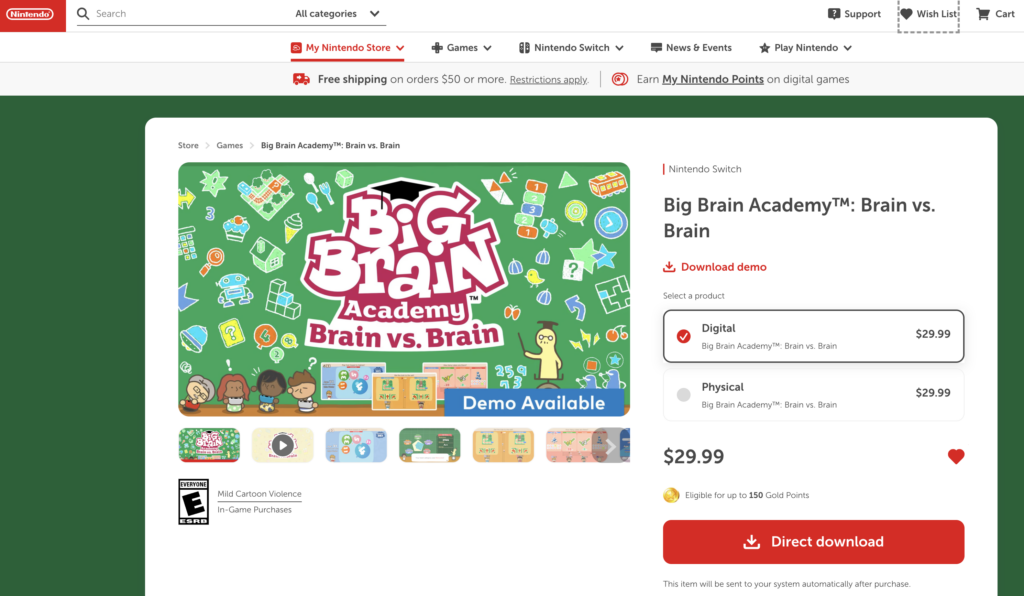
This feature ensures they have a ready list of desired items for future reference, whether for birthday presents or personal purchases.
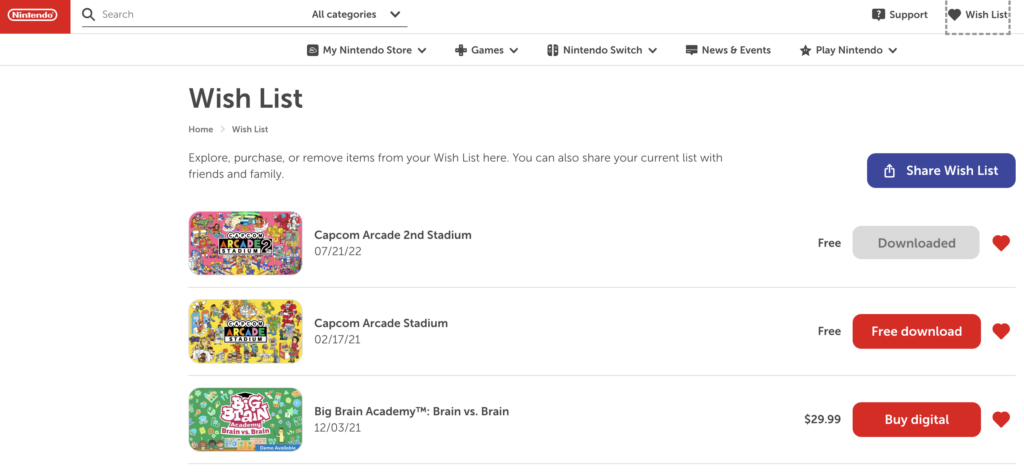
When you search for gift registries on Google, you’ll discover numerous well-known retailers.
On the first page of search engine results (SERPs), you’ll find Target, Amazon, Walmart, Crate & Barrel, and Bed, Bath & Beyond, among others.
Why are gift registries crucial for driving sales? Consider wedding registries as an example.
According to CNBC, Baird’s 2022 survey revealed that Amazon leads as the top wedding registry provider, with a 45% listing penetration.
Walmart offers gift registries for various occasions including babies, weddings, and classrooms. You can also create a personalized registry to commemorate any special event.
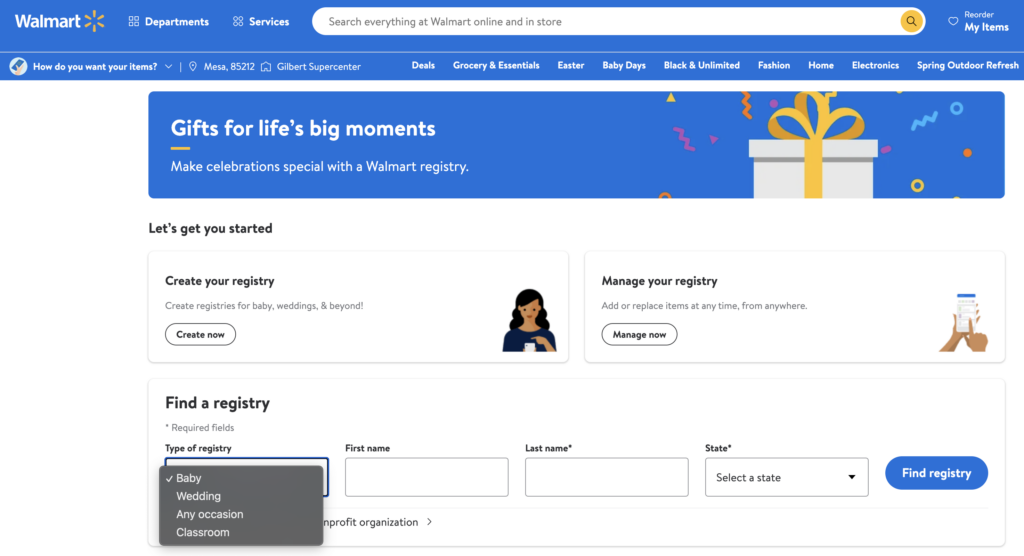
If your ecommerce store serves customers in a specific region, you have two choices for supporting the primary languages spoken in that area:
Xfinity, for instance, employs English on its www subdomain and Spanish on its es subdomain.
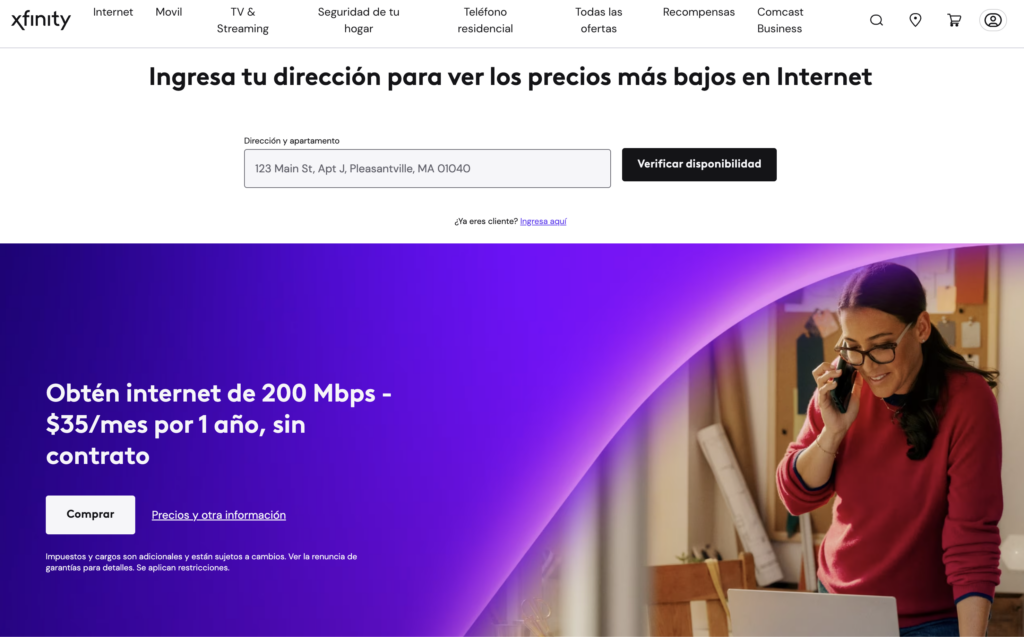
Are you aiming to boost customer retention? Introducing a loyalty program is an effective strategy to incentivize repeat purchases from your e-commerce store.
Loyalty programs are generally available as free or paid memberships, offering customers exclusive benefits such as early access to special deals. Participants often earn points with each purchase, which can be redeemed for rewards like discounts on future purchases or complimentary products.
Ulta is among the brands that provide a complimentary rewards program to reward loyal customers.
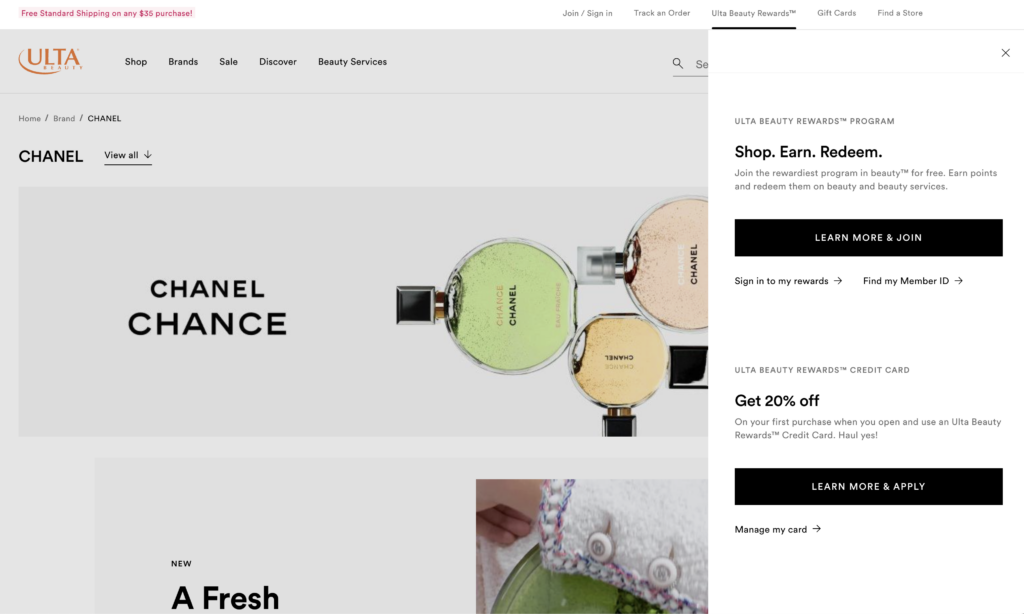
Customers can enroll at no cost and accumulate points that can be used for online purchases or at physical stores.
Although marketers may debate the effectiveness of homepage image and video carousels, they remain widely utilized by many ecommerce brands.
Leading retailers like Walmart, eBay, Home Depot, Samsung, Wayfair, Lowes, Costco, Sam’s Club, and Kohl’s prominently feature carousels showcasing their latest promotions and sales.
Chewy, another prominent ecommerce brand, utilizes a carousel on its homepage. This carousel highlights discounts on auto-ship orders, healthy pet food, flea & tick medications, pet bedding, and other related products.
If your ecommerce brand operates physical store locations, enhancing offline sales can be achieved by integrating details about the nearest store into your website’s header.
This feature enables customers to shop online, reserve items for in-store pickup, or view the inventory available at their local store before making a purchase in person.
Retailers such as Hobby Lobby prompt website visitors to provide their location to deliver information tailored to their nearest store.

Depending on the location of your ecommerce store and its customer base, you may need a policy informing visitors about the data collected through cookies and other analytics tools on your website.
Michael’s ecommerce store utilizes a popup to inform visitors about the use of cookies, aimed at improving user experience and analyzing website traffic.
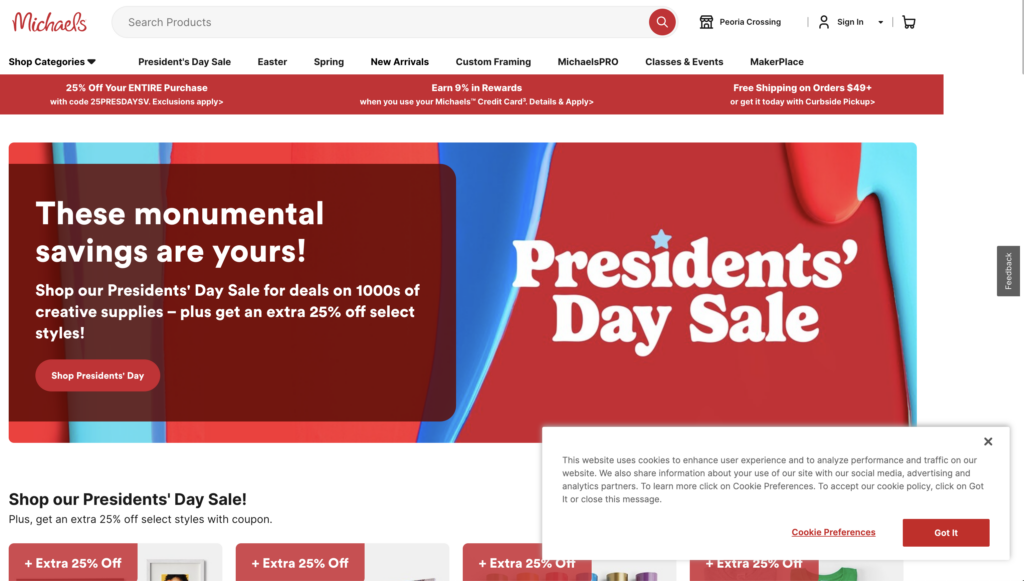
Visitors are provided with options to accept the policy, learn more details, and adjust their cookie preferences accordingly.
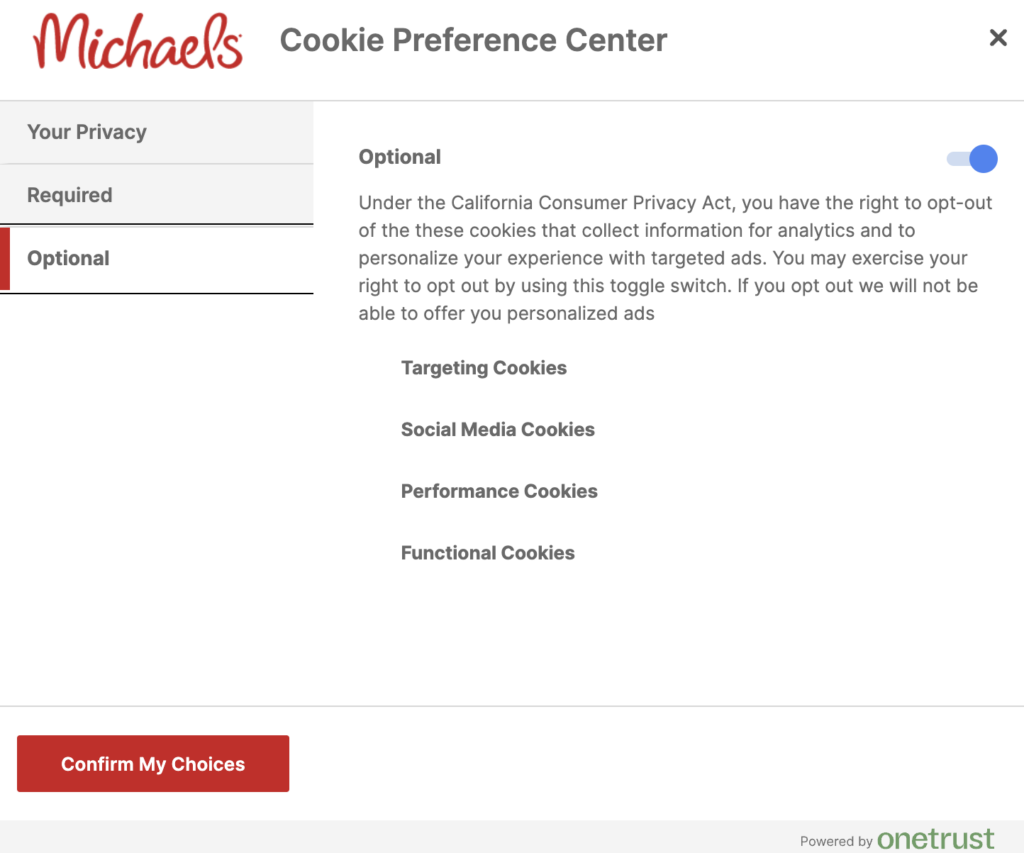
Implementing an affiliate program encourages more content creators to discuss your product.
It allows your loyal customers to earn income by promoting products they love.
Leading retailers such as Target utilize affiliate programs and creator networks to cultivate brand advocates.
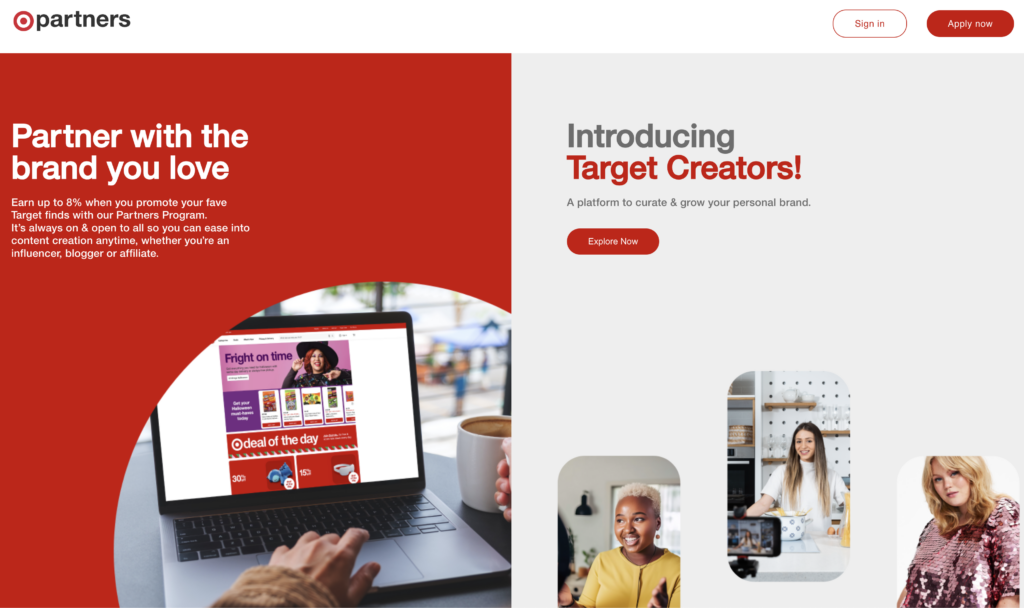
While having a strong social media presence is essential, some brands have expanded their ecommerce offerings to include TikTok Shop.
TikTok features Shop products in a specialized feed, enabling brands to collaborate with platform influencers for marketing content.
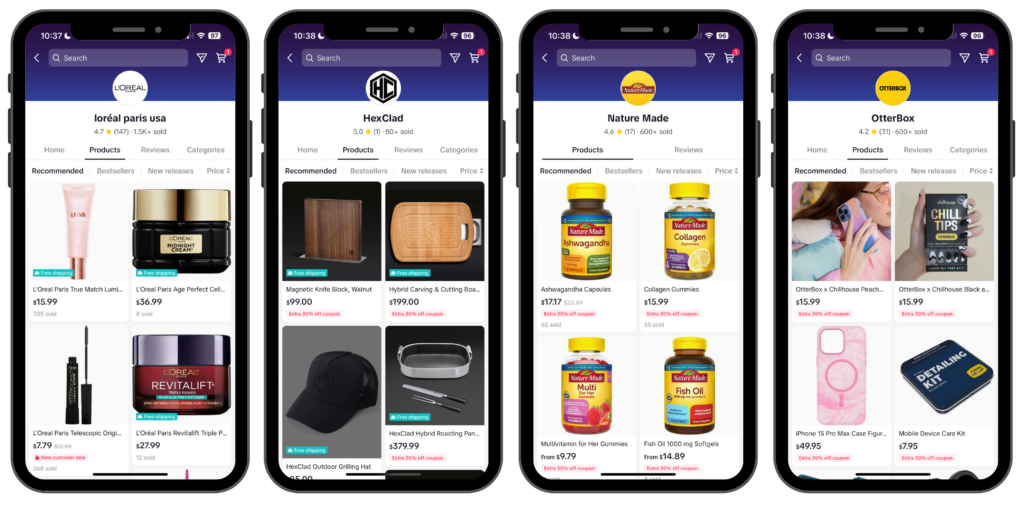
Companies like OtterBox have incorporated vertical videos and branded hashtags on their websites to enhance social commerce initiatives even further.
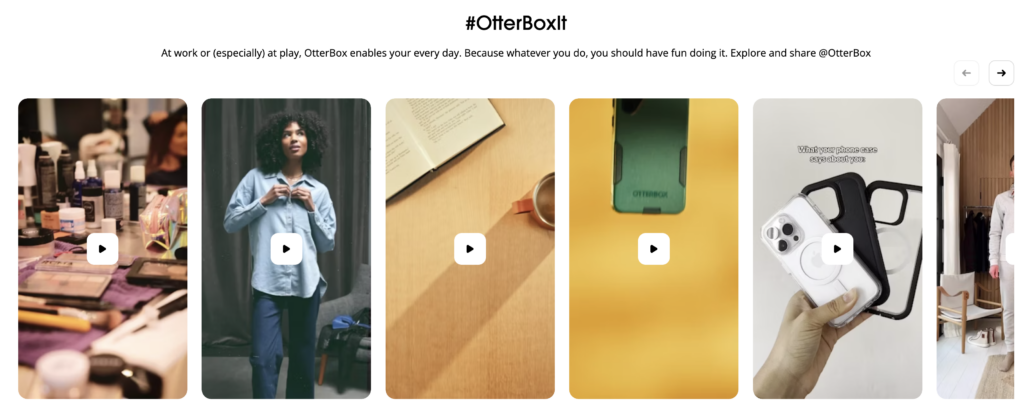
Creating a successful ecommerce website hinges on understanding your customers, their journeys, and their needs. It’s essential to streamline these journeys on your site.
Here are key principles to guide the development of your ecommerce shopping experiences:
The ultimate success of any ecommerce website hinges on surpassing customer expectations.
Keep abreast of the latest trends in technology and aim to provide an outstanding online shopping experience.
Original news from SearchEngineJournal